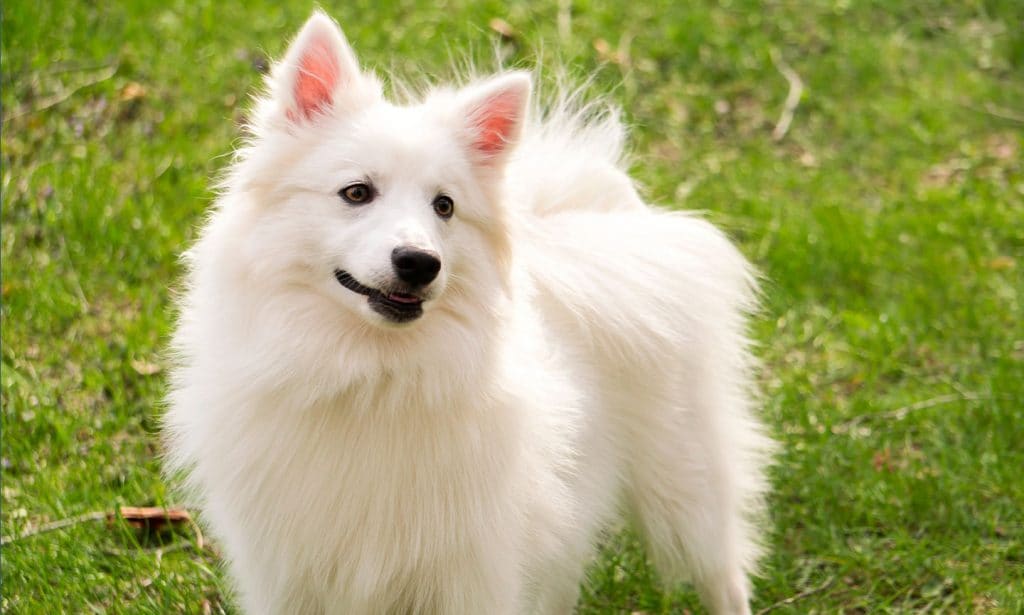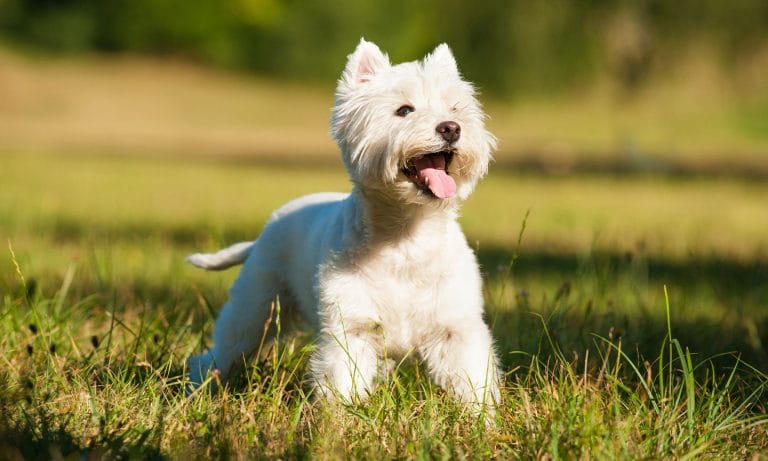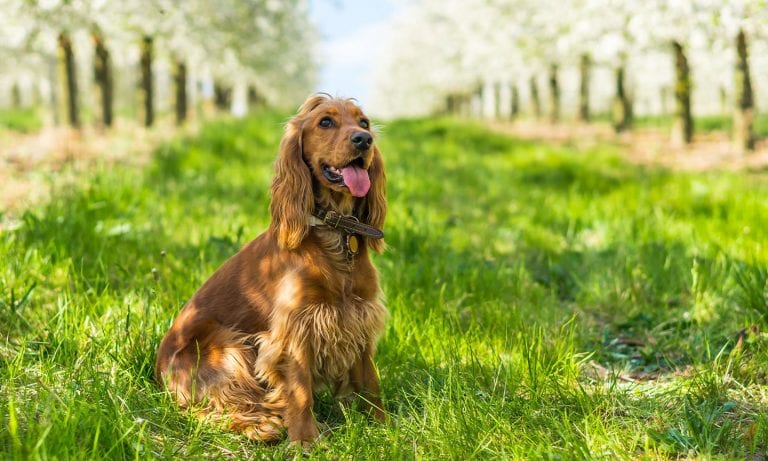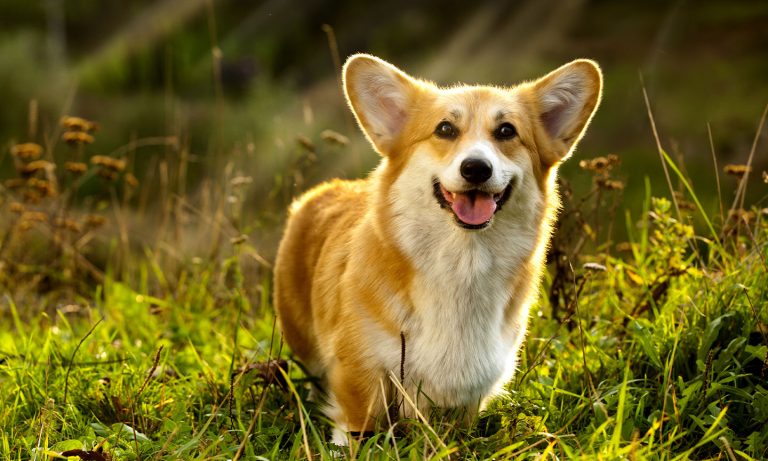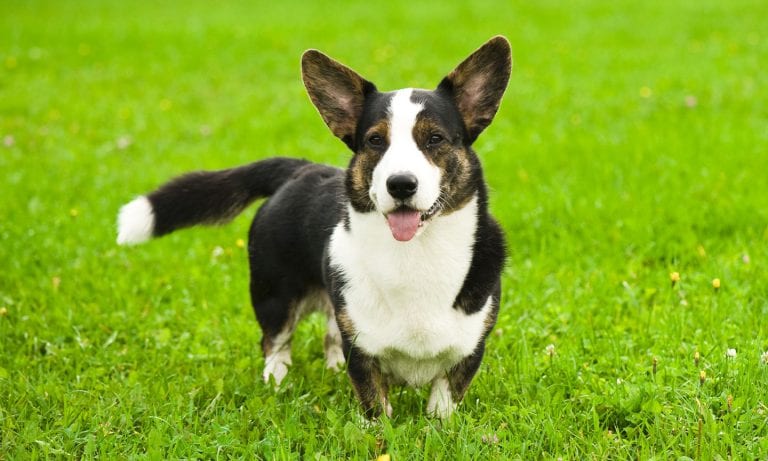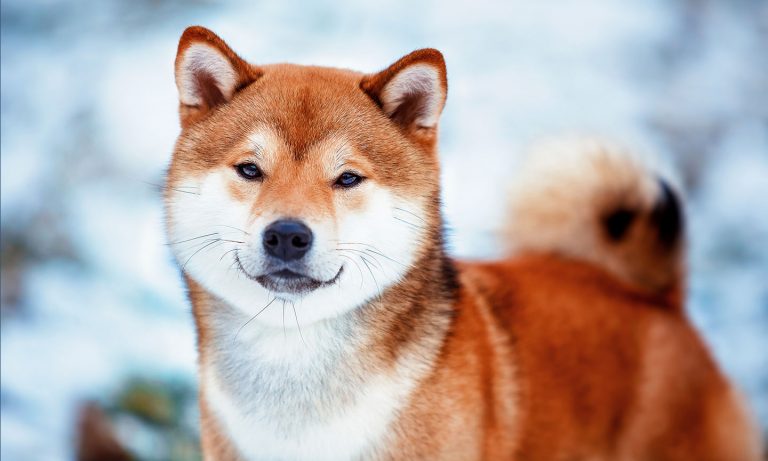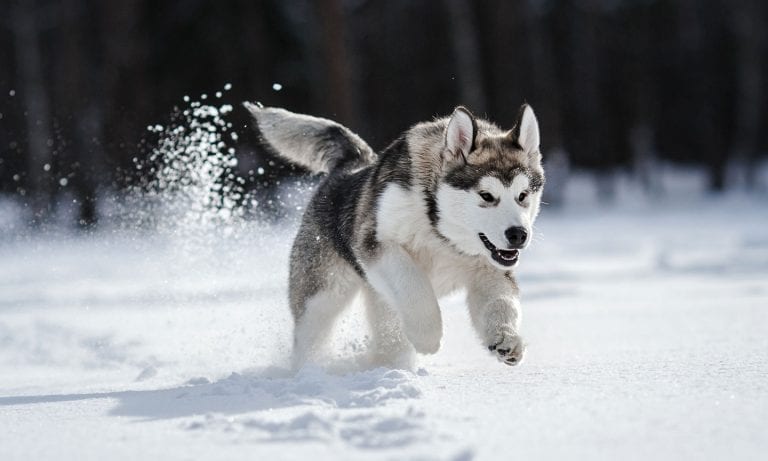Ready to be entertained? The American Eskimo Dog has all the makings of a star performer: Their polar-white fur is eye-catching, their agility is worthy of the center ring and they’ll literally jump through hoops to get your attention. A rare breed with head-turning looks and a bubbly, highly extroverted personality, you’ll often find the Eskie grandstanding for affection. They may steal the show in public, but it’s really you they want to please. This little dog will turn up the volume on your life’s activities with dazzle and panache. Your favorite pop star will never measure up.
Breed Snapshot
Temperament:
Social ButterflyEnergeticSuper SmartCoat Color:
White
Best For
American Eskimo Dogs are best for experienced pet parents or first-time pup parents who can provide plenty of attention and socialization and don't mind spending time grooming their fluffy coat.
American Eskimo Dog Temperament
The American Eskimo Dog (aka the American Spitz) has an outgoing, intelligent and friendly temperament, which means this breed is very trainable and makes a fabulous best friend. These extroverted pups form strong attachments to their people and want to spend every moment with their loved ones.
Eskies aren’t aggressive or biters, but that doesn’t mean you shouldn’t socialize your pup! Early socialization helps your dog be cool with making new friends (either two- or four-legged) throughout their life. If they’ve had plenty of socialization as puppies, they can live well with cats, other dogs and kids. Because they’re on the small side, small kids and babies may accidentally hurt your pup, so be sure to supervise all pupper/kiddo playtime. The Eskie’s personality is full of charm, and they live to be the center of attention.
How to Care for a American Eskimo Dog
With a dog this gorgeous, maintenance will be required. American Eskimos shed, and that coat needs a lot of care to keep it fluffy and fabulous. Eskies are also high-energy pups, which means you’ll spend a lot of time exercising and training them. But hey—that just means you have more time to bond with and love on this wonderful pup.
American Eskimo Dog Health
American Eskimos have a life expectancy of 13 to 15 years, and they don’t have a lot of health issues. Many of these issues are hereditary, so only purchase your puppy from a reputable breeder who screens their pups. If you’re adopting an Eskie, be sure to get a copy of the vet wellness exam to see if the dog already suffers from one of these health problems.
- Hip Dysplasia: Hip dysplasia is a condition where the hip joint isn’t formed properly. Dogs with this condition can experience difficulty walking, and the condition can get worse over time. In some cases, hip dysplasia is hereditary. Although the severity can vary, treatments like pain relievers, physical therapy or surgery are often prescribed.
- Progressive Retinal Atrophy: American Eskimos can inherit progressive retinal atrophy (PRA), which is a degenerative disease that gradually causes blindness. While there currently isn’t a treatment for PRA, the disease isn’t painful or life-threatening. A pup who loses vision can still lead a happy life. Genetic testing can be performed on breeding dogs to ensure it isn’t passed on to future generations.
- Juvenile Cataracts: Just like humans, dogs can develop cataracts and experience vision loss. Juvenile cataracts develop during the early stages of a dog’s life and can be hereditary. In some cases, surgery may be an option.
- Skin and Coat Issues: Because the Eskie has a thick double coat, pet parents will want to prioritize coat and skincare. If the coat becomes matted, it can prevent air from reaching the skin, leading to skin infections and sores. Frequent grooming and carefully checking your dog’s skin for sores and signs of infection (redness, swelling) can help to prevent these issues.
American Eskimo Dog History
The American Eskimo breed has its origins in dogs who lived 6,000 years ago. These Nordic breeds, also called the German Spitz dogs, included the Pomeranian, Samoyed, and Keeshond. These pups possess many of the distinctive traits the Eskie reflects today, including double coats and pointed ears.
During the early 1800s, German immigrants began settling in America. These farmers brought along their beautiful and easily trainable companions: German Spitz dogs. Around this time, traveling circuses were very popular, and, slowly but surely, the dogs “ran off with the circus” and became circus performers. Barnum and Bailey famously featured Eskies who danced to music alongside clowns! Their brilliantly white coats, perky personalities and remarkable intelligence made the American Eskimo’s ancestors born performers.
In 1917, America entered World War I, and the German Spitz’s name was changed to the American Eskimo Dog due to a nationwide scorn for anything of German origin. (Today, the German Spitz and the Eksie are two separate breeds.) The American Kennel Club registered the American Eskimo Dog in 1995, and the rest (as they say) is history.
Are you ready to make this pup your companion dog? You can find a list of reputable American Eskimo Dog breeders on the American Kennel Club’s website. The price for a puppy ranges from $1,200 to $3,000. But for that price, you’re likely getting a pup who’s been screened for health and temperament issues and may come with pedigree papers. You can also contact a local Eskie rescue or watch for the bred at your local shelter.
FAQs
Do American Eskimos shed?
American Eskimos shed a lot. In addition to blowing their coats twice a year during the spring and fall, they shed daily. (Blowing their coat means they shed chunks of fur instead of individual hairs.) Be prepared to spend lots of time grooming your dog, and keep a heavy-duty vacuum and lint roller at the ready!
How long do American Eskimos live?
American Eskimos live between 13 and 15 years. Feeding your dog a high-quality food, keeping an eye on their weight and taking them to the vet for regular checkups can help keep them healthy and live a long and happy life.
Are American Eskimos good family dogs?
American Eskimos can be good family dogs as long as they’re well-trained and well-socialized. This breed is highly social and affectionate, and your Eskie will quickly become an important member of your family.
Do American Eskimos bark a lot?
Yes, American Eskimo Dogs bark a lot. They can become especially vocal if they lack proper socialization or exercise. Eskies may channel their excess energy into barking and other destructive behaviors, so make sure their exercise needs are met and that they receive the attention that they crave.
What are the most common American Eskimo mixes?
- American Eskimo-Pomeranian mix (Eskiranian or Eskipom)
- American Eskimo-Husky mix (Huskimo)
- American Eskimo-Poodle mix (Eskapoo)
- American Eskimo-Shiba Inu mix (Imo-Inu)
- American Eskimo-Chihuahua mix (Chimo)
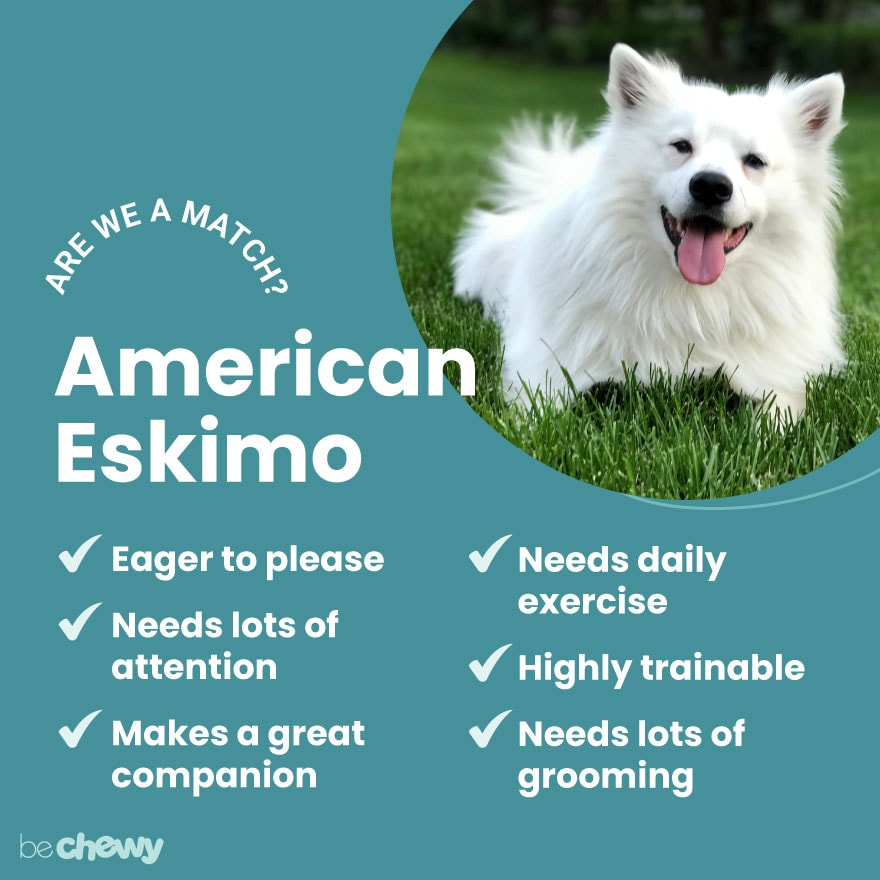
Top Takeaways
American Eskimos are highly energetic and very smart pups who need an active pet parent able to give them the exercise and attention they crave (and to care for that gorgeous coat). These dogs are a great choice if you’re looking for a loyal and loving companion who will become the center of your universe.
Expert input provided by veterinarian Dr. Carol Osborne, DVM, a board-certified diplomate of the American Board of Anti-Aging Medicine and founder and director of the Chagrin Falls Veterinary Center and Pet Clinic, and certified dog trainer Carol Saunders, CTC, PCT-A, CTDI, owner of Positive Pooches.

Search for Adoptable American Eskimo Dogs Near You
Top American Eskimo Dog Names
These are the top American Eskimo Dog names as chosen by Chewy's pet parents!
Female Names
- Luna
- Sasha
- Daisy
- Elsa
- Aspen
- Bella
- Lucy
- Mochi
- Winter
- Lily
Male Names
- Milo
- Zeus
- Charlie
- Loki
- Max
- Buddy
- Ghost
- Mochi
- Leo
- Toby
Share:
